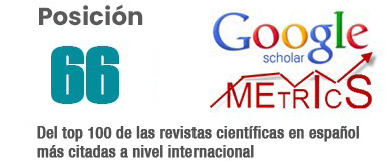Nature as a victim before the perpetration of environmental criminal crimes
DOI:
https://doi.org/10.62452/kesaed53Keywords:
Nature, subject of law, environmental criminal offensesAbstract
The conception of nature as a subject of rights, is embodied in the Ecuadorian Constitution, arising from the need to protect the environment, in the face of the attacks of which it has been a victim, with the intention of guaranteeing the protection of the environment, and granting benefits to the human beings that inhabit the planet, since by suffering ecosystems are undermined, this results in serious damage to humanity. Within this conception of defense of nature and enforceability of its rights, as established by the Constitution of Ecuador, the existence of criminal sanctions cannot be ignored, based on the fact that environmental criminal protection provides protection to the different elements that make up nature, as it would be, the air, water, soil, flora and fauna. However, environmental criminal law focuses on the collective interests linked to the elements that make up the environment in order to obtain an authentic ecological justice system, focused on addressing the damage caused to the environment and the consequent generation of a number indeterminate victim of the community. Such approaches lead to the formulation of the purpose of this article, to describe nature as a victim in the face of the perpetration of environmental criminal offenses. In fact, the need to protect nature is undeniable, through the right that it possesses and in attention to the right that man has to an adequate environment, which parallels the recognition and configuration of environmental criminal sanctions, in the face of actions typified as ecological crimes.
Downloads
References
Arias, F. (2012). El Proyecto de Investigación. Guía Para la Elaboración. Trillas.
Bacigalupo, E. (1982). La instrumentación técnico-legislativa de la protección penal del medio ambiente. Estudios Penales y Criminológicos. Revistas da USC, 5(22), 191-214.
Balestrini, M. (2002). Como se Elabora el Proyecto de Investigación. Servicio.
Brito, J. (2003). El proceso Investigativo. Alma Mater.
Castro Torres, A. S., & Suysuy Chambergo, E. J. (2020). Herramientas de gestión ambiental para reducir el impacto de los costos ambientales en una empresa de construcción. Revista Universidad y Sociedad, 12(6), 82-88.
De Luis, E. (2018). El derecho al medio ambiente en la justicia penal. (Tesis doctoral). Universidad de Valencia.
Echeverría, H., & Suárez, S. (2011). Manual de Capacitación en Derecho Penal Ambiental. Centro Ecuatoriano de Derecho Ambiental.
Ecuador. Asamblea Nacional Constituyente. (2008). Constitución de la República del Ecuador. Registro Oficial 449. https://www.oas.org/juridico/pdfs/mesicic4_ecu_const.pdf
Ecuador. Asamblea Nacional. (2014). Código Orgánico Integral Penal. Registro Oficial 180. https://derechoecuador.com/codigo-organico-integral-penal-coip/
Jaquenod, S. (2008). Iniciación al Derecho Ambiental. Dykinson.
Meier, H. (2006). Introducción al Derecho Ambiental. CARHEL, C.A.
Muñoz, F. (2017). Derecho Penal Parte Especial. Tirant lo Blanch.
Organización de Naciones Unidas. (1972). Declaración de Estocolmo sobre el Medio Humano 1972. ONU. http://www.ordenjuridico.gob.mx/TratInt/Derechos%20Humanos/INST%2005.pdf
Palella, S., & Martins, F. (2010). Metodología de la Investigación Cuantitativa. Once, C.A. FEDUPEL.
Ramírez, T. (2006). Como hacer un Proyecto de Investigación. Panapo.
Ramos, L. (1986). Notas de Derecho Penal Dominicano. Tiempo, S. A.
Stuzin, G. (1984). La naturaleza sujeto de derechos. Revista Ambiente y Derecho, 1(1), 100-112.
Tamayo, M. (2008). El proceso de la investigación. Limusa.
Universidad Bicentenaria de Aragua. (2017). Manual para la Elaboración, Presentación y Evaluación del trabajo Final de Investigación de los Programas de Postgrado. UBA.
Zaffaroni, E. (2011). La Pacha Mama y el humano. Ediciones Madres de Plaza de Mayo.
Downloads
Published
Issue
Section
License
Copyright (c) 2023 Yeriny del Carmen Conopoima-Moreno (Autor/a)

This work is licensed under a Creative Commons Attribution-NonCommercial-ShareAlike 4.0 International License.
Authors who publish in Revista Metropolitana de Ciencias Aplicadas (REMCA), agree to the following terms:
1. Copyright
Authors retain unrestricted copyright to their work. Authors grant the journal the right of first publication. To this end, they assign the journal non-exclusive exploitation rights (reproduction, distribution, public communication, and transformation). Authors may enter into additional agreements for the non-exclusive distribution of the version of the work published in the journal, provided that acknowledgment of its initial publication in this journal is given.
© The authors.
2. License
The articles are published in the journal under the Creative Commons Attribution-NonCommercial-ShareAlike 4.0 International License (CC BY-NC-SA 4.0). The terms can be found at: https://creativecommons.org/licenses/by-nc-sa/4.0/deed.en
This license allows:
- Sharing: Copying and redistributing the material in any medium or format.
- Adapting: Remixing, transforming, and building upon the material.
Under the following terms:
- Attribution: You must give appropriate credit, provide a link to the license, and indicate if any changes were made. You may do this in any reasonable manner, but not in any way that suggests the licensor endorses or sponsors your use.
- NonCommercial: You may not use the material for commercial purposes.
- ShareAlike: If you remix, transform, or build upon the material, you must distribute your creation under the same license as the original work.
There are no additional restrictions. You may not apply legal terms or technological measures that legally restrict others from doing anything the license permits.




